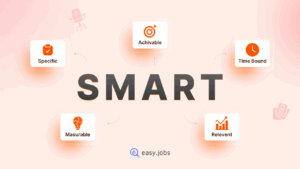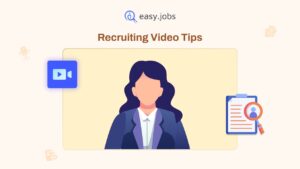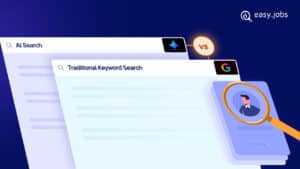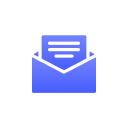Are you still recruiting based on instinct? In 2025, hiring the right people needs more than a guess. It needs data. A recruitment funnel is a step-by-step system that helps you find, assess, and hire the best talent.
With AI and innovative tools, it shows what is working and what is not. If you are still going with your feelings only, it is time to switch to a smarter, data-driven approach. Let us discover how to build a data-driven recruitment funnel in 2025.

Understanding the Recruitment Funnel: Stage by Stage
Imagine hiring like a funnel, a big opening at the top and a small one at the bottom. At the top, you try to get lots of people to notice your job. As you move down, you slowly find the best ones to hire. This is called a recruitment funnel.
However, here is the smart part: by 2025, companies will not guess their way through this funnel. They utilize recruitment analytics and real data to optimize every step. Let us go through each stage together and see how data helps.
Stage 1: 📣 Awareness – Getting People to Notice You
Every hiring journey starts with one simple question: Do people even know you are hiring? If no one sees your job openings, they will not be able to apply. This is when people first learn your company is hiring. You can look at things like:
- How many people visit your website
- How well your posts do on social media
- Who is watching your videos or reading your content?
These insights help you understand whether your current reach is effective or if it is time to improve your visibility with stronger content, better messaging, or more targeted channels.
Stage 2: 🎯 Attraction – Making People Want to Apply
Getting noticed is just the beginning. Once people know you are hiring, the next step is getting them interested. Now, you need to spark real interest so people feel excited to learn more about the job. Here, finding data below helps you see:
- Which job ads get the most clicks
- Which social platforms (like LinkedIn or Instagram) bring in the best people
- What kind of messages or images work best
These insights help you craft more compelling job posts that speak directly to your ideal applicants and move them one step closer to applying.
Stage 3: 📝 Application – Getting Them to Apply
You have caught their attention, and now they are ready to take the next step, which is applying. But even small roadblocks can cause great candidates to drop off. Now someone decides to fill out your form. But what if they quit halfway? You can track:
- Where people stop filling out the form
- How long it takes to apply
- What questions scare them off
With these insights, you can simplify and streamline your application process, making it easier to complete and turning more interested visitors into actual applicants.
Stage 4: 🤖 Screening – Finding the Best Candidates
Once applications start coming in, it is time to figure out who is truly a good fit. This step is all about saving time and focusing on quality. AI in hiring 2025 makes this faster. You can:
- Use AI to scan resumes
- Give short online skills tests
- See how well someone fits the job using match scores
With these tools and the right data, you can streamline your screening process, reduce bias, and confidently move the strongest candidates forward.
Stage 5: 🎙️ Interview – Talking to the Right People
Now that you have shortlisted the best candidates, it is time for real conversations. Interviews are your chance to learn more and leave a strong impression too. Here is what you can track:
- How does each interviewer rate the same person?
- What do candidates think of the interview process?
- How many interviews turn into job offers?
By analyzing this data, you can make your interviews more fair, consistent, and effective, creating a smoother experience for both your team and the candidates..
Stage 6: ✉️ Offer – Making the Job Offer
You have picked someone. Now it is time to make the offer. But choosing someone is only half the battle. Will they accept? At this stage, below data can help you understand and improve your offer process:
- How many offers get accepted
- How long does it take to send an offer
- What people ask for when they negotiate
These insights help you move faster, make competitive offers, and increase the chances that your top choice says yes.
Stage 7: 🤝 Hire – Making the Final Decision
The final step has arrived. They have accepted the offer and are officially part of your team. However, even after the hire is made, data continues to play a crucial role. You can track how well new hires perform on the job:
- If new hires do well in their jobs (this is called quality-of-hire)
- How long it takes from job post to final hire (known as hiring velocity)
The more you understand these outcomes, the more you can improve your recruitment funnel for future success. Better data today means smarter decisions tomorrow.
Key Recruitment Funnel Metrics to Track in 2025
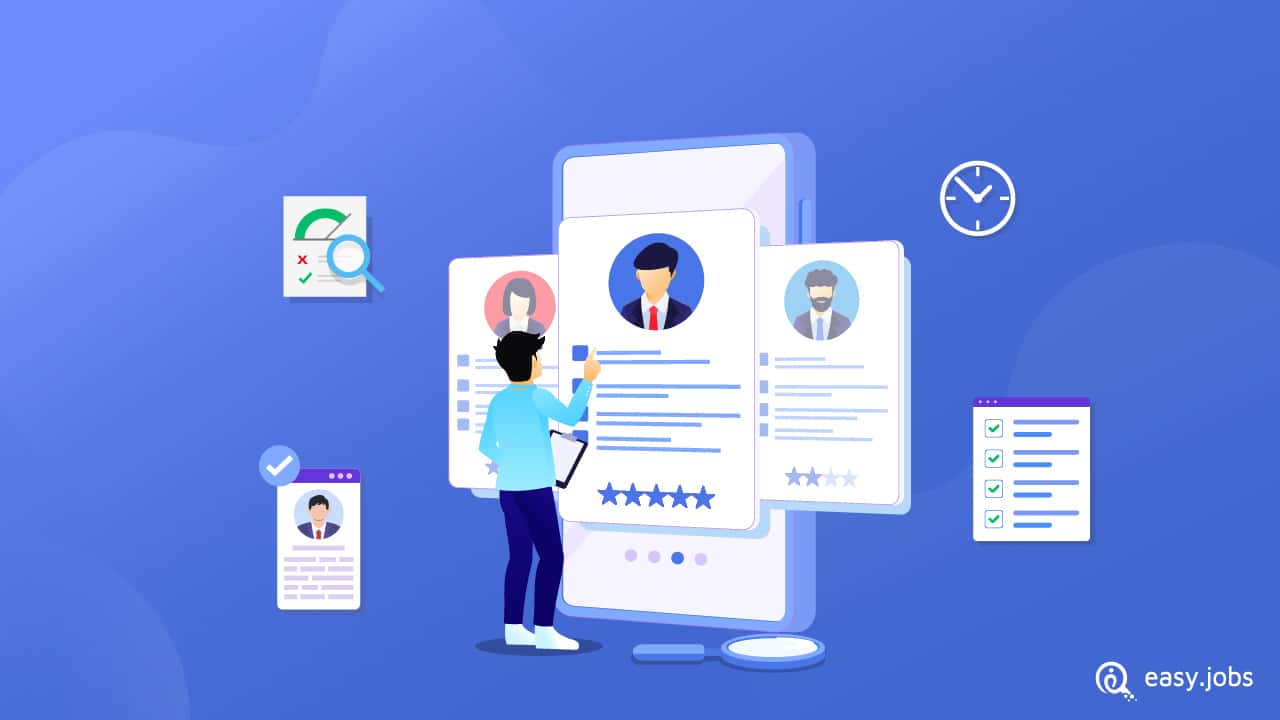
When you are trying to improve something, you need to measure it. That is where recruitment funnel metrics come in. These are numbers that indicate how effectively your hiring process is working. In 2025, smart companies will use these numbers, called recruitment analytics to make better choices. Let us look at the most important ones and how they help.
1. Time-to-Hire
This is the average number of days it takes to hire someone, from the day the job is posted to the day they accept your offer. If it takes too long, good candidates may take other jobs. Tracking this helps you speed things up.
Example: If it usually takes 40 days to hire someone, your goal could be to cut that down to 30.
2. Application Conversion Rate
This shows how many people actually finish the job application after they click “Apply.” If lots of people visit your job post but very few apply, something is wrong. Perhaps the form is too lengthy or unclear.
Example: If 100 people click on your job post and only 10 apply, your conversion rate is 10%. That is low and it tells you to fix the application process.
3. Interview-to-Offer Ratio
This tells you how many people you need to interview before offering one person the job. If you are interviewing too many people and making very few offers, it means your screening process is not working well.
Example: If you interview 10 people to hire one, you might want to improve how you shortlist candidates.
4. Cost-per-Hire
This is the total amount spent to hire one person, including ads, software, team time, and more. Hiring is expensive. If you know what it costs per hire, you can find ways to save money and still get great people.
Example: If one hire costs $5,000, you might try free or cheaper channels that still bring in top talent.
5. Quality-of-Hire
This looks at how well new employees perform after they are hired. It is not just about hiring fast. It is about hiring people who stay, grow, and do great work.
Example: Track how many new hires pass their probation, get good reviews, or stay more than a year.
6. Hiring Velocity
This is how quickly your company fills jobs overall. In fast-moving markets, slow hiring means falling behind. Faster hiring helps teams stay productive and reach goals.
Example: If your company fills 50% of open roles in 2 weeks, that is high hiring velocity. If it takes 3 months, there’s room to improve.
By monitoring these recruitment funnel metrics, you can identify issues early and implement informed adjustments. The more you understand your numbers, the better your hiring will be.
Tools & Tech That Power Data-Driven Hiring
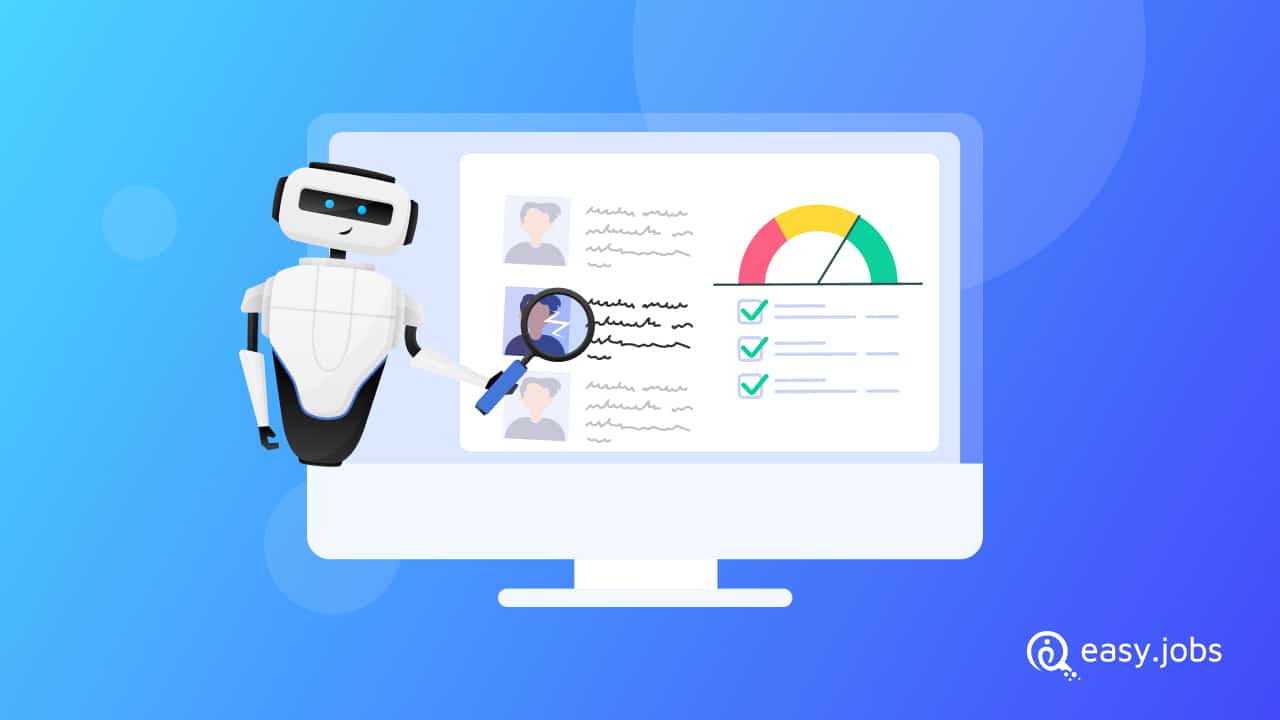
You have seen how helpful data can be in the hiring process. But how do you actually get that data and use it? That is where recruitment technology comes in. Using the right tools is not just helpful, it is essential. These tools help you find great candidates, track every step of the hiring funnel, and make better decisions based on real numbers.
One powerful platform that brings many of these tools together is easy.jobs. It is designed to simplify and strengthen every part of the hiring process with modern, data-driven features.
Let us look at the main types of tech that make data-driven recruitment funnels work and how easy.jobs fits right in.
📂 Applicant Tracking Systems (ATS)
Think of an ATS like a smart filing cabinet. It helps you keep track of every applicant, their resume, and their stage in the hiring journey. A good ATS saves time, prevents missed follow-ups, and tracks key metrics like time-to-hire and application conversion rate.
easy.jobs includes a built-in ATS that automatically organizes candidates, supports collaborative hiring, and provides performance data in real time, all from one simple dashboard.
🤖 AI Screening Tools
Screening large numbers of applicants can be overwhelming. AI-powered tools assist by scanning resumes, evaluating skills, and scoring candidates based on how well they align with your job criteria.
With easy.jobs, you get AI-assisted screening that speeds up shortlisting, reduces bias, and highlights your strongest candidates, so you can make quicker, smarter decisions.
📊 Analytics Dashboards
Data is only useful if you can see and understand it. That is why analytics dashboards are so valuable. They turn numbers into clear charts and insights so you can quickly spot what is working and what is not.
easy.jobs offers visual analytics dashboards that show you real-time performance across your funnel, from applicant sources to hiring velocity, helping you fine-tune your hiring strategy with confidence.
By combining all these tools, easy.jobs gives you everything you need to build and manage a data-driven recruitment funnel. Instead of relying on guesswork, you will have accurate, easy-to-use data that helps you hire smarter, faster, and more efficiently every time.
Step-by-Step Guide to Building a Data-Driven Recruitment Funnel
Now that you know the stages, the metrics, and the tools, let’s build your data-driven recruitment funnel—step by step. To move from guessing to growing, using real data to improve hiring at every stage.
Step 1: Set Measurable Hiring Goals
The first step in building a data-driven recruitment funnel is to define what success looks like for your hiring process. Instead of saying, “We want to hire better,” be specific and set measurable goals.
For example, you might aim to reduce your time-to-hire by 20% over the next three months or increase your offer acceptance rate to 90%. Setting clear targets helps you stay focused and ensures your recruitment funnel aligns with tangible business outcomes.
Step 2: Choose the Right Metrics and Track Them
Once your hiring goals are clear, the next step is to choose the recruitment funnel metrics that matter most to your team. Avoid trying to track everything at once; instead, focus on a few key indicators that align with your objectives. Common metrics include time-to-hire, application conversion rate, interview-to-offer ratio, and hiring velocity.
These data points give you a clear picture of how well your funnel is performing. Use dashboards or your applicant tracking system (ATS) to monitor these numbers in real-time and make informed decisions along the way.
Step 3: Use AI Tools to Improve Screening and Outreach
Now it is time to bring technology into the process. Nowadays, AI tools play a big role in saving time and increasing accuracy during hiring. You can use AI to scan resumes, score candidates based on job fit, and automate follow-ups with potential hires. Setting up email sequences can also help keep top candidates engaged throughout the process.
These tools not only speed up the process but also help you screen applicants more fairly and consistently, ensuring you find the right people more quickly.
Step 4: Optimize Each Recruiting Funnel Stage with Real-Time Data
Collecting data is just the start. What really matters is how you use it. Pay close attention to where candidates drop off in the recruitment process and take action quickly.
For example, you can A/B test different job post headlines to see which one gets more clicks, shorten lengthy application forms to reduce drop-offs, or adjust interview steps that might be causing delays. Real-time data provides the insights needed to fine-tune each stage of your funnel, enabling you to make smarter decisions that improve results.
Step 5: Train Your Hiring Team in Data Use
Even the most advanced tools will not make an impact if your team does not know how to use them. It is important to train recruiters and hiring managers to read, understand, and act on the data available to them.
Consider running short, focused training sessions on how to use dashboards, interpret candidate metrics, or test the performance of job ads. When everyone on your hiring team becomes confident with data, your entire recruitment funnel becomes more effective and aligned.
Step 6: Continuously Test, Learn, and Improve
A strong recruitment funnel is never truly finished. It should evolve over time. To keep improving, regularly review your key metrics, test small changes, and measure the results. For example, make slight adjustments to job descriptions, interview formats, or communication strategies, and see what impact they have.
Learn from what works and just as importantly, from what does not. This ongoing process of testing and learning is how successful companies build recruitment funnels that stay effective and grow with their hiring needs.
Following these steps, you will build a data-driven recruitment funnel that not only works today but also continues to improve tomorrow. It is not about replacing recruiters with machines. It is about giving your team the power to hire with confidence, backed by real data.
Case Studies: Companies Leading in Data-Driven Hiring
Want to see how top companies are using data to hire better? Let us take a quick look at a few well-known brands that are already leading the way in data-driven recruitment. Even big, old-school companies are now using smart tools, recruitment analytics, and predictive hiring models to stay ahead.
Meta – Using AI to Predict Hiring Success
Meta (the company behind Facebook and Instagram) does not guess who to hire. They use advanced AI in hiring to look at patterns in skills, experience, and behavior. Their smart systems help predict how likely a candidate is to succeed, even before the interview starts.
📊 What we learn: Predictive data saves time and helps teams focus only on the most promising candidates.
Hilton – Tracking the Candidate Experience
Hilton knows that great hiring is not just about filling roles. It is about treating candidates well. They track candidate experience data, including how people feel during the process. Surveys and feedback help them improve every step, from the job post to the offer.
😊 What we learn: A better experience leads to better hires and more accepted offers.
Unilever – Gamified Tests and Smart Analytics
Unilever takes screening to a whole new level. Instead of just resumes, they use short games and behavior-based questions to test skills. They combine this with recruitment technology trends like AI scoring and performance predictions.
🎮 What we learn: Fun, fair, and fast screening methods can help discover talent others might miss.
These companies show that going digital does not mean losing the human touch. It means using data and tools to hire smarter and faster, while still prioritizing people. No matter your company size, you can start applying the same ideas to your own data-driven recruitment funnel today.
Boost Recruitment & Start Optimizing Your Funnel Today
Hiring in 2025 is not just about posting a job and hoping for the best. If you want to stay competitive, it is time to build a data-driven recruitment funnel that works smarter, not harder. You have now seen how the best teams use real numbers, smart tools, and clear strategies to find and hire top talent.
From tracking recruitment funnel metrics to using AI in hiring, the way forward is clear: use data to make better decisions at every stage. Now is the perfect time to take a closer look at your current recruitment funnel. Ask yourself what’s working well and where things might be slowing down.
Then, choose just one key metric to focus on this quarter, perhaps it is your time-to-hire or your application conversion rate. Start small by testing one new tool or trying out a fresh message in your job posts. Track what happens, learn from the results, and use that insight to keep improving.
If you liked this article, be sure to subscribe to our blog. For real-time discussions, tips, and networking, join our Facebook Community and connect with fellow HR professionals and business leaders.

